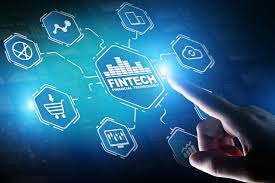Mufti Asad Gul
Fintech has a history which goes back many centuries. It is not something new. Technological advancements, in whichever form, have always refreshed the way finance and money management have worked in previous centuries. Finance and technology have been inextricably intertwined since the very beginning. If we look at the earliest days of finance dating back thousands of years, the initial impact of technology was in the context of building systems for keeping records of government finances or payments for taxes and agricultural production. Bartering is said to be a common practice in earlier times, but the innovation of money as a medium of exchange redefined transactions.
Money is a form of technology that allows us to physically handle the ideas embedded in finance. Hence, financial technology has a very, very long history indeed. Caliph Abdul Malik ibn Marwan introduced the first Islamic dinar and dirham in the year 76 Hijrah. During the Mamluk dynasty (872-922 A.H/1468-1517 CE), Ful?s (copper coins) came into existence to use in small commercial transactions. Its purchasing power was very limited, being for common daily needs of life. In the Ottoman empire, money was further developed. The Ottomans produced the currency named Qaimah in the form of paper money.
In 1914, the Ottomans officially declared that paper money was the only legal tender for the medium of exchange. Similarly, cheques and debt certificates allowed for the flow of funds at a faster rate than ever before. Cashless transactions were another financial technology breakthrough which increased market efficiency.
In the early Islamic era, the Islamic literature makes references to the word Sakk, meaning certificate or order of payment. Sakk was another form of technology; papers representing financial obligations originating from trade and commercial activities.
Other technologies which have reshaped finance include the evolution of the joint stock company or the corporation, forms of financing like banking, or, more recently, stocks. Although the positive and negative impacts of these technologies are debated, they have changed the landscape of the financial system.
The 19th century flourished with the technological creation of financial infrastructure. In this age, new systems like the telegraph, transatlantic cables, steamships, and railroads assembled financial inter linkages between countries, allowing for the rapid transmission of trades, transports, and money transfers worldwide.
1838 saw the development of the telegraph. Giovanni Caselli invented the pantelegraph in 1865. This technology is most famous for the method in which banking transactions verified signatures. Not so long after, in 1866, the first transatlantic cable was devised. This transatlantic cable facilitated the first cross-border financial transaction in the late 19th century.
It allowed financial centers such as New York, London, and Paris to communicate and exchange data. Towards the end of the 19th century, Barclays Bank launched its Cairo branch to process financial transactions related to the construction of the Suez Canal. This led Sharia Scholars to object and declare the conventional banking system as non-compliant with Islamic principles.
This was a major catalyst in developing the Islamic financial system. Most of the underlying development to support Islamic Fintech occurred in the 20th century. Of course, no century’s development can be negated; every previous century has supported the development of the subsequent century.
The 20th century’s development would not have been possible if the people of the 19th century did not innovate and push themselves. History works in layers. One generation passes its legacies to the next and each of them build on top of their ancestors’ technologies.
During the Second World War, countries exerted all their efforts in developing codes for secure communications, especially in military and intelligence operations. Not only were countries looking to develop encrypted methods to communicate – their endeavors to crack and break codes increased too. Encoding and decoding led to the development of computer technologies and artificial intelligence, too. The 1950s saw the development of credit cards with Diners Club and American Express launching their cards.
The 1960s witnessed Quotron Systems introduce the Quotron in 1960, the first electronic system to provide selected stock market quotations to brokers through desktop terminals. The global telex network was established in 1966, which played a crucial role in providing the communications necessary for the next stage of financial technology development. It was during the 1960s that an operational Islamic bank was developed in Egypt by Ahmed El-Nagar.
In the same period, Malaysia saw the establishment of the Muslim Pilgrims Savings Corporation, which helped pilgrims in Malaysia perform Hajj. This corporation was later renamed Tabung Hajj and helped pilgrims invest their Hajj savings in a Sharia- compliant manner.
Tabung Hajj led to the development of Bank Islam Malaysia. Meanwhile, code-breaking tools were being developed by International Business Machines (IBM), whilst the first calculator was product by Texas Instruments in 1967. The first handheld calculator was transformational in the way that finance operated on a day-to-day basis.
The calculator can be considered the parent of the smartphone, perhaps the most transformative technology in the context of Fintech. Barclays Bank introduced the first automated teller machine (ATM) in 1967, calling it a “robot cashier,” which allowed customers to get cash around the clock. The ATM and the calculator arguably mark the commencement of the modern evolution of today’s Fintech.
That ATM allowed, over the next several decades, for a transformation in the relationship that people had with money and with finance. 1967 thus marks a period where we begin to see a process of digitisation. Digitisation is taking analogue processes and systems, such as handwriting or the physical calculation of money, and digitising them: transforming them into a digital environment.
The 1970s and 80s saw other countries follow with the establishment of Islamic banks in their countries, such as Dubai, Kuwait, Sudan, and Saudi Arabia. However, one major establishment of the 70s was the Islamic Development Bank.







